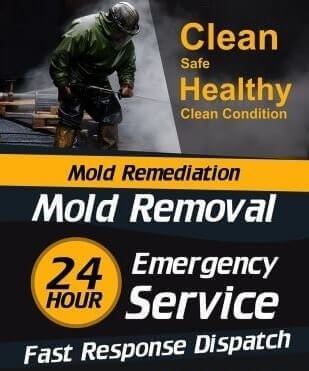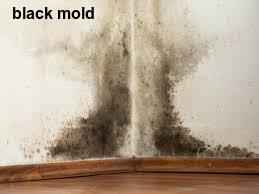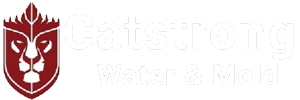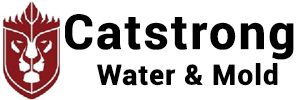Quality, Services Mold Inspection Inspection Mold South Houston Texas
We offer MOLD INSPECTION INSPECTION MOLD South Houston TEXAS, call us today!
Quality Mold Inspection Inspection Mold in South Houston Texas
✅Call .We are a full service mold inspection INSPECTION MOLD South Houston texas and inspection and remediation company that provides mold inspections, assessments, and testing to help protect you and your family.

Exactly how do you recognize if you have a mold and mildew issue within your house?
Working With a Mold Assessor to execute a comprehensive, visual analysis with appropriate mold test sampling is the most effective is the best way of determining whether there is a mold and mildew issue inside of your home. Mold spores are microscopic as well as are not always seen during a visual examination and can just be identified through testing.
Mold and mildew growth is ending up being an increasing number of widespread within homes across Mold Inspection South Houston Texas as a result of water breach and elevated indoor humidity. Most problems are typically not recognized up until an appropriate mold evaluation and also testing have actually been performed.
Indoor mold outbreaks can cause wall surface, home furnishings, carpeting, drape, book, and also important paper file damage. Molds can also set off allergic reactions such as bronchial inflammation as well as asthma attacks. The common mold and mildews seen in the majority of residence as well as workplace can actually come to be a considerable trouble otherwise addressed swiftly.
There are a couple of actions you can require to aid in decreasing the possibilities of a mold break out taking place in your house or business. However, if you have really discovered considerable growth already, contact an expert mold and mildew elimination firm instantly to get going on clean-up.
The most necessary device you can have in your collection versus mold growth is understanding. What is mold? In what types of settings does mold prosper? Just how can mold nests be securely gotten rid of? Understanding what you're up against will make it that a lot less complicated to deal and also prevent with mold and mildew nests.
-
mold inspection cost apartment
-
mold inspection process
-
mold inspection need
-
mold inspection inspection mold
-
mold inspection prepare
-
mold inspection home
-
mold inspection company
-
mold inspection testing
-
mold inspection pays
-
mold inspection mold testing
-
mold inspection remediation
-
mold inspection free
-
mold inspection call
-
mold inspection costs
What is Mold? - Inspection Mold South Houston Texas
Molds are small fungis that grow in moist settings. Unlike plants that call for photosynthesis to expand, endure by generating enzymes onto the raw material they are occupying and then soaking up the deteriorated remains of that matter. From foods to paper items since molds do not require a high degree of nutrients to endure they can grow on practically any type of organic issue.
South Houston Texas Mold Inspection
Why Should It Be Removed?
Lots of individuals will certainly develop allergy to the spores held off by huge mold colonies. If a specific touches a mold and mildew nest in anyhow, there is the possibility they may develop a type of dermatophytes, like professional athlete's foot or jock itch. Mycotoxins are gaseous or fluid substances created by several mold and mildew nests and also are taken into consideration a few of the most hazardous chemicals on earth. Both people in enhancement to animals can obtain seriously ill if this is ingested.
Mold
Mold or mould, also sometimes referred to as mildew, is a fungal growth that develops on wet materials. Mold is a natural part of the environment and plays an important part in nature by breaking down dead organic matter such as fallen leaves and dead trees; indoors, mold growth should be avoided.
Mold inspection is, for the most part, a visual inspection of a house. ... A typical mold inspection involves the inspector talking to the property owner about any areas where they have seen mold, or where there have been moisture problems or water damage in the past.
How Can I Prevent Mold?
To minimize the danger of establishing a mold and mildew problem, reduced the humidity levels in your house or workplace. Mold spores can survive on a great deal of any type of basic material nonetheless they will not make it via in dry climates. If you locate a water leak, obtain it fixed today. If floods have actually damaged your office or home, completely dry the damaged area as promptly as possible. On a daily basis that passes in which a mold and mildew episode is not dealt with is industrial or household home shed.
How Can I Tell If I Have a Mold Outbreak?
If mold and mildew has actually lived in your home or workplace, a specialist mold detection service can aid you figure out. Nonetheless, professional assistance is not always needed. Mold spores are promptly discovered, also in smaller sized swarms, and also in some cases avoid a musky, natural smell. If components of your structure are awesome, dark, and damp, you can be pretty sure you have mold expanding there.
I'm certainly very occupied with modl inspection and I'm hoping you enjoyed reading the new page. Do you know somebody else who is inquisitive about the subject? Feel free to promote it. Bless you for your time. Kindly come by our blog back soon.Judge Rules Exclusion Bars Coverage After Giant Hot Water Heater Leak
A federal district court in Florida ruled an earth movement exclusion barred insurance coverage for structural damage to a home after about 4,000 gallons of water leaked from a water heater.
Can I Clean It Myself?
You could want to attempt obtaining rid of the mold and mildew yourself if your break out is rather small and consisted of. Damp vacuum can aid get rid of water from rugs as well as floorings swiftly, helping to remove the possibilities of a mold and mildew break out. As soon as the carpet or furniture has really been tidied up, nevertheless, you should also clean up the vacuum cleaner itself, as mold and mildew can build up inside the container and hose pipeline. Wet removal, such as scrubbing the impacted areas with water and cleaner, is basic and also fundamental however not constantly efficient for identified mold nests.
If you do tackle mold and mildew yourself, make certain to use protective rubber handwear covers and also a facemask. Also make certain the cleaned up place dries swiftly to prevent new mold nests from establishing.
Industry organizations:
Mold Inspection South Houston Texas
South Houston Texas Mold Inspection Services
South Houston Texas Mold Remediation Company South Houston Texas Mold Removal
South Houston Texas Mold Remediation Cost South Houston Texas Mold Removal
South Houston Texas Mold Remediation South Houston Texas Mold Removal South Houston Texas EPA Health Issues South Houston Texas OSHA South Houston Texas Water Damage Restoration South Houston Texas
Why Choose Us?
- Very Experience
- Open 24 Hours Every day
- Fast Arrival Time
- Competitive Pricing
- Accepting Credit Cards
- Quick and Honest Service
- Excellent Customer Service
- Commitment and Promise
- Embrace New Technology
Mold Inspection in Texas
| Mold Inspection | Mold Remediation |
- Castle Hills, TX
- Crowley, TX
- Dilley TX
- Grape Creek TX
- Hutchins TX
- Medina TX
- Pflugerville TX
- Schulenburg TX
- Taft TX
- Stafford TX


